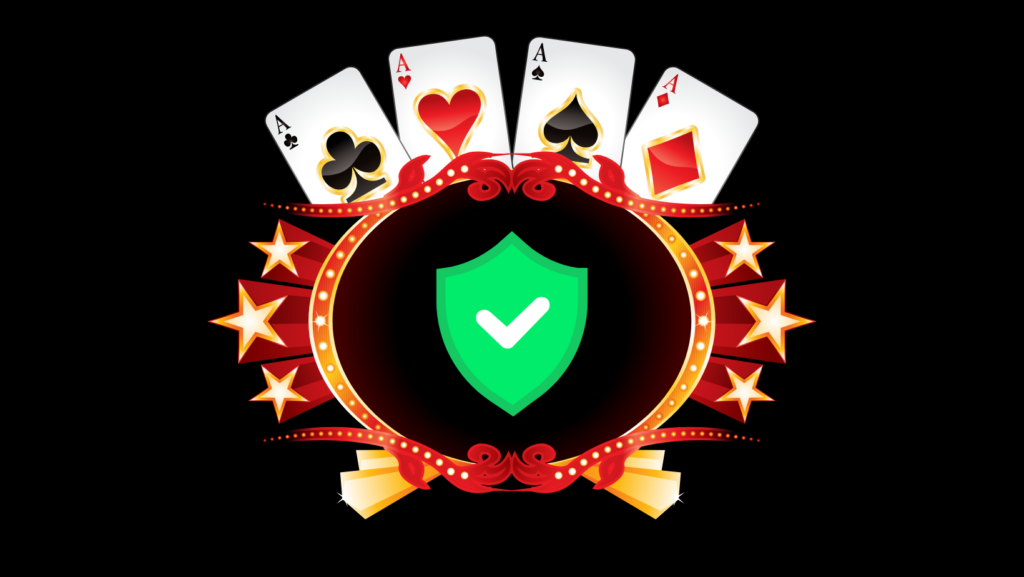
Introduction
A. Gambling definition and its significance in the Philippines
B. A concise synopsis of the evolution of wagering in the Philippines
C. Overview of Momobet as a Contemporary Gambling Platform
History of Gambling in the Philippines is a complex and multifaceted part of the country’s cultural and social heritage.
It goes back to prehistoric times, when Filipino ancestors liked playing games of chance. Basically, gambling is putting money or valuable things on a result that you don’t know much about in order to get more resources. For many generations, this has been an important part of life in the Philippines.
It’s not only a fun thing to do, but it also brings people together and sometimes causes arguments. The Spanish colonization brought about the introduction of novel gambling practices, such as lotteries and card games, which were frequently subject to regulation or prohibition based on the colonial government’s position.
Throughout the period of American occupation and the ensuing transition to freedom in the Philippines, the gaming sector experienced alterations. In 1976, the government established the Philippine Amusement and Gaming Corporation (PAGCOR) to regulate and centralize casino operations. The rise of digitalization has given way to the establishment of modern online platforms like Momobet.
This website offers an updated iteration of traditional betting by creating a digital setting for Filipinos to engage in various types of gambling, including sports betting and casino games. These activities can be readily accessible with minimal exertion, necessitating only a few mouse clicks.
Gambling in Its Pre-Columbian and Ancient Forms
A. A history of gambling among indigenous peoples
B. Gambling in traditional games
Gambling had already become an integral part of pre-colonial Philippine civilization several centuries before the arrival of Spanish invaders. Many of the archipelago’s indigenous peoples’ social and religious rituals included gambling in one way or another, and this activity was deeply ingrained in their culture and history. The artifacts, oral histories, and written accounts of early visitors, including Chinese merchants, provide proof that these tribes gambled. According to these narratives, the native Filipinos employed common household items like seeds, fruit stones, or shells to play games of chance. These items would either be cast and interpreted, or utilized in games that required both skill and luck.
Games like “cara y cruz,” a coin-tossing game, and “panguingue,” a card game thought to have its origins in the Philippines, were common ways to wager. Wagers involving land, animals, or personal possessions were typical during these games. “Sabong,” the local term for cockfighting, was another common kind of gambling that had deep cultural roots and was frequently linked with religious celebrations and community get-togethers. A wide range of viewers from different socioeconomic backgrounds would gamble on the results of these contests.
III. From 1521 to 1898, Spain was a colony.
A. Introduction of new gambling forms by Spanish colonizers
B. The influence of Catholicism on gambling activities
C. Gambling as a source of colonial revenue
The gaming scene in the Philippines underwent tremendous changes from 1521 until 1898, when the country was a Spanish colony. New forms of gambling were introduced to the native population by the Spanish colonists.European card games like “brag” and different lottery variations became popular among the colonists and native Filipinos alike. There was a complicated link between gaming and the influence of Catholicism, which the Spanish introduced as part of their goal to convert the native populace. The moral precepts of the Church, on the one hand, frequently forbade gambling and all its accompanying vices. Catholic patron saint and religious festivals, on the other hand, often included gambling as an entertainment element, showing that gambling was tolerated and even integrated into religious and social life.
During this time, gambling was both a popular hobby and an important way for the colonial authority to earn money. The Spanish government started to tax and control gambling after realizing how profitable it was. A reliable source of funds to sustain the colonial administration and its activities could be guaranteed through this law, which also served to regulate the gaming sector and reduce illicit gambling.
During the Spanish Colonial Period, new forms of gambling were introduced, the influence of Catholicism was mixed, gambling was used as a colonial revenue source, and the first regulated gambling houses were established. This was a significant era in the history of gambling in the Philippines.
IV.Colonial America and the American Occupation (1898–1946)
A. The evolution of gambling legislation and laws
B. The spread of gambling culture in the United States
C. The explosion of gambling activities such as lotteries and horse racing
Throughout the American Occupation and Commonwealth Era (1898-1946), gambling in the Philippines underwent significant changes in both legal framework and cultural influences.
In an attempt to modernize the archipelago’s legal system, the new colonial administration of the Philippines, which the United States acquired in the Spanish-American War, introduced legislation prohibiting gambling. Stricter laws on the business were an effort by the United States government to control the enormous illegal gambling that had flourished during Spain’s rule.
During this time, new laws were enacted with the goal of legalizing and regulating certain forms of gambling while prohibiting others entirely. Gambling became ingrained in Filipino society as a cultural shift brought about by American influence.
Poker and other American-style casino games were more popular at this time. A sea change occurred when many started to see lotteries and horse racing as valid forms of gambling about this time. As a result of the Manila Jockey Club’s formation in 1937, horse racing betting was made legal and the sport was controlled, which garnered praise from both the Filipino and American communities. The Philippine Charity Sweepstakes Office (PCSO) was established in 1935 with the purpose of using the lottery to provide financial support for social and health services. Due of their appeal and possible social benefits, lotteries became popular quickly.
V. The Years Following Independence and the era of Ferdinand Marcos (1946–1986)
A. Making some kinds of gambling legal
B. Creation of government agencies to oversee gambling operations
C. Expansion of the gambling industry and its economic impact
Significant changes occurred in the gambling environment of the Philippines throughout the post-independence period, especially during the Marcos regime from 1946 to 1986. Gambling was deeply embedded in Filipino culture, and the newly independent Republic of the Philippines had the daunting challenge of regulating and controlling it after the end of American colonial administration. Many saw the legalization of specific types of gambling as a practical way to capitalize on this industry. The state allowed and controlled cockfighting and other types of gambling, including betting on horse races and the national lottery, which were long-established and widely-practiced. Under President Ferdinand Marcos, the government wanted to institutionalize gambling businesses after realizing the potential money it could provide.
Under Marcos, the gambling industry flourished rapidly, so the government created institutions to monitor and oversee it. The fast growth of casinos in the Philippines prompted PAGCOR’s creation. It centralized and regulated gambling in the country. PAGCOR’s mandate was fair gaming revenue collection and usage for the public.The original goal of establishing these bodies was to safeguard gambling from being used for illegal purposes and to redirect the winnings to national development initiatives.
During this time, the gambling sector grew substantially, which affected the economy. Particularly lucrative for the tourism industry were casinos, which drew customers from all over the world. Employment opportunities and expansion in the service sector were both boosted by this business. Social programs, infrastructure projects, and other government initiatives were financed by the collection of taxes and levies by PAGCOR and other regulatory authorities. There were real monetary gains, and the gaming sector eventually became entrenched in the national economy.
VI. Modern Advancements (1986–Now)
A. The growth of gambling firms and regulated casinos
B. Momobet and the advent of online gambling
C. How technological advancements have altered gaming habits
The gambling business has changed significantly since 1986, with the rise of regulated casinos and gaming firms. This period saw the creation and growth of many land-based casinos. Many of these casinos are currently run by well-known gaming companies. These organizations have professionalized and regulated a once-mistrustful industry. Strong regulatory structures protect players and boost the economy through revenue and tourism. These guidelines have ensured fair, responsible, and transparent gambling.
The internet and online gaming platforms have revolutionized gambling alongside the growth of traditional casinos. Momobet differentiates out since it offers virtual casino games and sports betting.
Players are able to bet from the comfort of their own homes or while they are on the move, which broadens the scope of the company’s global clientele. Because of its accessibility, anonymity, and ease, online gambling has experienced remarkable growth in recent years.
It is impossible to overestimate how much technology has changed gaming. Online gaming has become more engaging and convenient with the introduction of software, mobile, and secure payment technology. Virtual reality casinos, blockchain-based gaming platforms, and live dealer games are a few instances of how technology is transforming the gaming industry. Operators can more successfully encourage ethical gaming and tailor players’ gaming experiences thanks to data analytics and artificial intelligence.
The gambling industry has advanced significantly since 1986. Online gaming sites like Momobet and licensed land-based casinos have grown. Technology has driven gambling growth, but government entities like PAGCOR have shaped the business through effective regulation and oversight.
VII. Momobet: From Origins to Gaming Platform
A. Momobet began in the Philippines
B. Momobet’s platform and services development
Momobet began as a small business in the Philippines, a country with a rich gambling tradition. Momobet started with early digital gaming in the region. At that time, the platform was created to meet the growing demand for accessible and various gambling options. Momobet first focused on popular local sports and casino games that Filipinos liked. Momobet transformed to extend its platform and products in response to rising demand for more complicated gaming experiences and technologies. By offering international sports betting, live dealer games, slots, and e-sports, the company was able to attract more Filipino and foreign gamers. The company invested much in cutting-edge software to ensure a smooth and secure gaming experience.
VIII. Social and Economic Implications
A. Gambling addiction and its social consequences
B. Contribution of gambling to the Philippine economy
In many societies, gambling addiction, a pervasive problem with far-reaching social implications, is an increasing worry. Gamblers often get caught in a cycle of losing, which can ruin their finances, hurt their relationships, and cause mental health issues like worry and depression. Addiction can entail employment loss, criminal behavior, and family neglect, which affects communities’ social fabric. Families may struggle with the emotional and economic effects of addiction, and society as a whole pays for more social services and criminal justice interventions. The Philippines’ economy relies heavily on gambling, especially government-sponsored casinos, online gaming, and lotteries. Due to its local and international client base, tourism and entertainment produce significant money. The government-owned Philippine Amusement and Gaming Corporation (PAGCOR) regulates and licenses private gaming operators in addition to operating casinos. Gambling generates government revenue for social welfare, infrastructure, and national development.
IX. Future View
A. Possible gambling law changes
B. Evolution of online and mobile gaming platforms like Momobet
C. New gaming technology and trends
A. As governments worldwide struggle with economic growth and the social impacts of gambling, new regulatory frameworks that could tighten controls to protect vulnerable populations or relax restrictions to allow market expansion and innovation in the industry are possible.
B. With the rapid advancement of digital technology and the widespread use of smartphones, online and mobile gambling platforms like Momobet are expected to grow, potentially revolutionizing the gambling landscape by offering unprecedented convenience and accessibility to users, but also presenting challenges in regulation, cybersecurity, and responsible gambling.
C. Virtual reality gaming, artificial intelligence-driven customer experiences, and blockchain-based transparency measures promise to redefine gambling, creating immersive and secure environments that could attract a new generation of tech-savvy gamblers.
X.Conclusion
A. A brief overview of how gaming in the Philippines has developed over the years
B. Momobet’s Place in This Historical Framework
C. Some concluding remarks about the Philippines’ gambling landscape
A. The History of gambling in the Philippines is a fascinating tapestry of cultural diversity and evolving social dynamics. Gambling has changed from pre-colonial activities to Spanish-influenced cockfighting and lotteries. The American period introduced horse racing and casinos, diversifying. In recent decades, technology has created online platforms like Momobet, making gaming more accessible and diverse.
B. The Philippines’ gaming history is changing as Momobet becomes a popular online gambling platform. It’s the latest step in this journey from physical to digital gambling. Momobet offers convenience, a large range of games, and the growing acceptance of gambling in Filipino entertainment culture.
C. Gambling in the Philippines is expected to develop and innovate. Blockchain and virtual reality will enable Momobet to provide more engaging and secure gaming experiences. Gambling will undoubtedly remain a major part of Filipino culture as the business adapts to shifting legislation and community attitudes.

